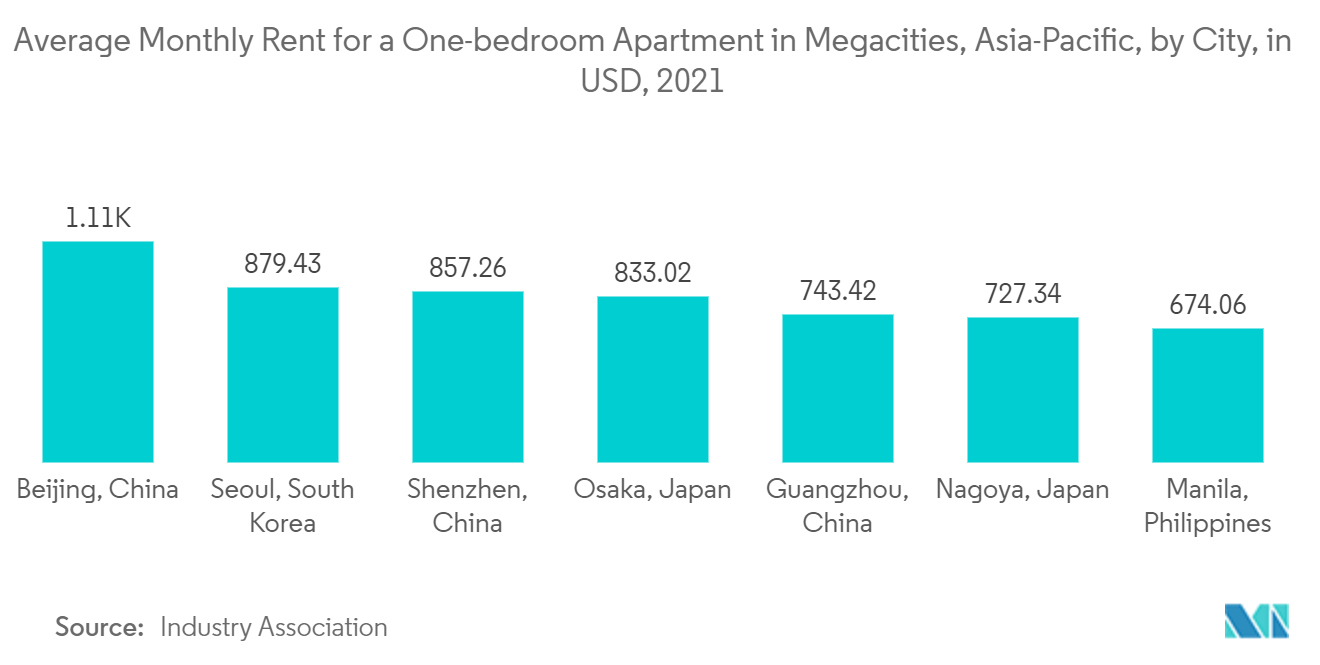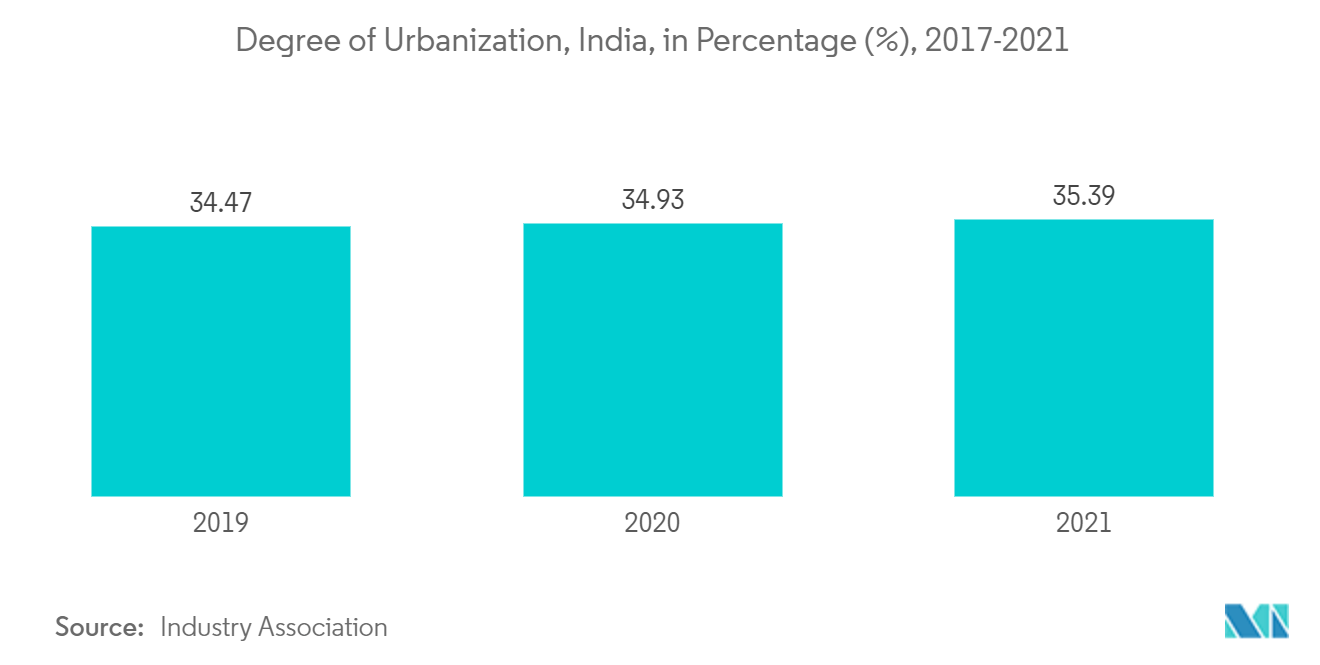Market Trends of Asia-Pacific Condominiums and Apartments Industry
This section covers the major market trends shaping the APAC Condominiums & Apartments Market according to our research experts:
Increase in Demand for Rental Properties
- While the Asia-Pacific real estate market outlook remains positive, there are some unknown risks. The pandemic had the potential to disrupt markets if new variants continued to emerge, slowing economic growth and halting cross-border distribution. The supply and distribution of construction materials may inevitably impact the region's real estate market. The global focus on the ongoing geopolitical tensions between Russia and Ukraine and the United States and China may continue to loom over all industries, including real estate. Nonetheless, investors can find opportunities despite these uncertainties, as trends point to a robust Asia-Pacific real estate market.
- The Indian rental housing market steadily recovered during the first quarter of 2022, with growth in the second quarter fueled by the gradual reopening of offices and educational institutions and the return of the workforce to these cities. Rental housing supplies in India fell by 9.8% Q-o-Q, with drops in Chennai, Hyderabad, and Delhi accounting for 1.9%, 4.8%, and 5.2%, respectively. Demand for rental homes increased by 29.0% Y-o-Y in the third quarter (Q3) of 2022, according to property buying and selling portal Magicbricks.
- China can potentially be the world's largest institutional, residential market, larger than the United States. Investors have already reacted to China's housing market transformation, with trades of income-generating residential assets on the mainland more than doubling the 2015-2019 average, according to MSCI-RCA data, with deal volumes in Hong Kong climbing even faster. Policymakers, particularly in Shanghai, have supported the local rental housing market through tax breaks, financial assistance templates, and improved legal frameworks governing asset conversion for residential use.
- Japan's housing market remains popular due to its defensive nature, which was again demonstrated during the pandemic. Although average residential rents in Tokyo's central five wards (C5W) fell by 5% between Q1/2020 and Q3/2021, they have already recovered in recent quarters, offsetting half of the rental drop seen during the pandemic. Tokyo's residential market is expected to resume its steady growth trajectory as Japan's economy continues its gradual recovery and population inflow to the capital (both from other domestic regions and from abroad) returns. Nonetheless, new risks are emerging in this relatively stable industry. The first risk factor stems from fierce competition for residential real estate.

Increasing Urbanization Demanding Affordable Housing
- A major chunk of the worldwide population lacks access to decent quality housing, with Asia-Pacific accounting for roughly 60% of the population. This housing shortage is most acute in low- and middle-income countries, where urbanization and population growth outpace formal housing supply. The Asian Development Bank (ADB) believes that to be called a livable city, which provides adequate housing for all its residents, particularly the poor and vulnerable. Unplanned urbanization and housing shortages have exacerbated informal settlements and slum intensification. Informal settlements and slums are frequently located in hazardous areas, which are congested, lack adequate services, and are vulnerable to natural disasters.
- Singapore is the only gateway city in the Asia-Pacific region where housing is reasonably priced and accessible compared to the region's most populous cities, according to the Urban Land Institute's (ULI) First Home Attainability Index report. Due to the low cost of Housing Development Board (HDB) units, which have a median price of USD 379,283, Singapore has the highest homeownership rate of nearly 90%. Private homes with a median price of USD 1.13 million account for less than 20% of total housing stock.
- The Pradhan Mantri Awas Yojana (PMAY), launched in 2015, is the Government of India's flagship mission to address the issue of shortage of affordable housing in the country. By 2022, it intends to provide pucca houses to all eligible urban households. The Affordable Rental Housing Complexes (ARHCs) program is a sub-scheme of the PMAY-Urban program. This scheme aims to make it easier for urban migrants and low-income groups to find dignified, affordable rental housing close to their workplaces. However, affordable housing sales in Tier I cities such as Mumbai, Pune, Bengaluru, and Hyderabad fell in 2020 and 2021 compared to 2019.

